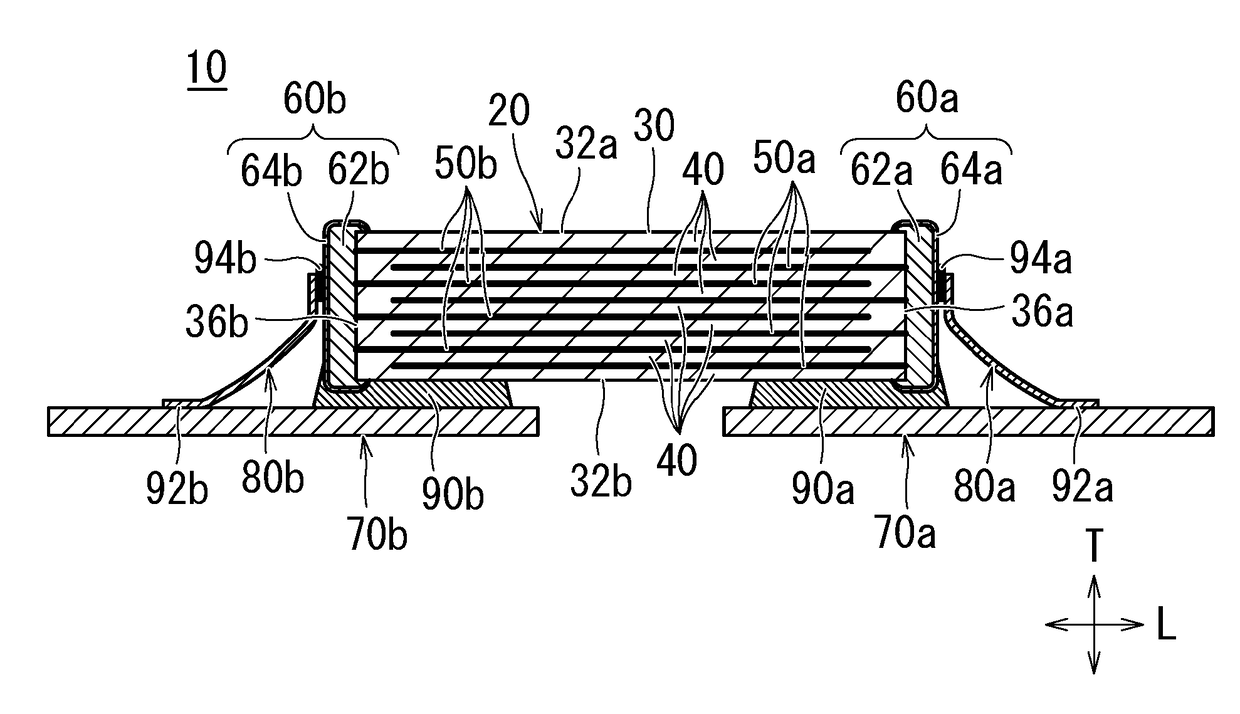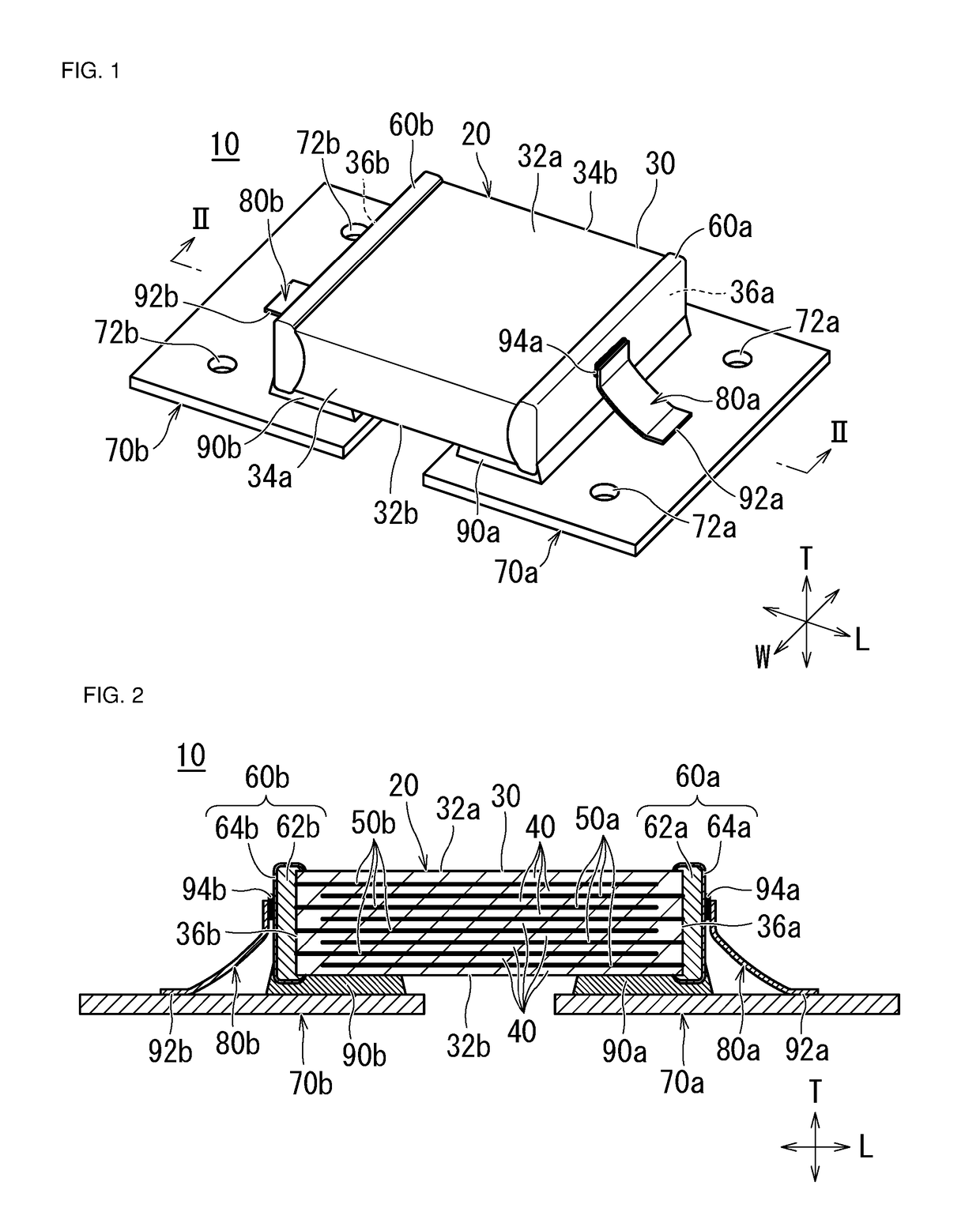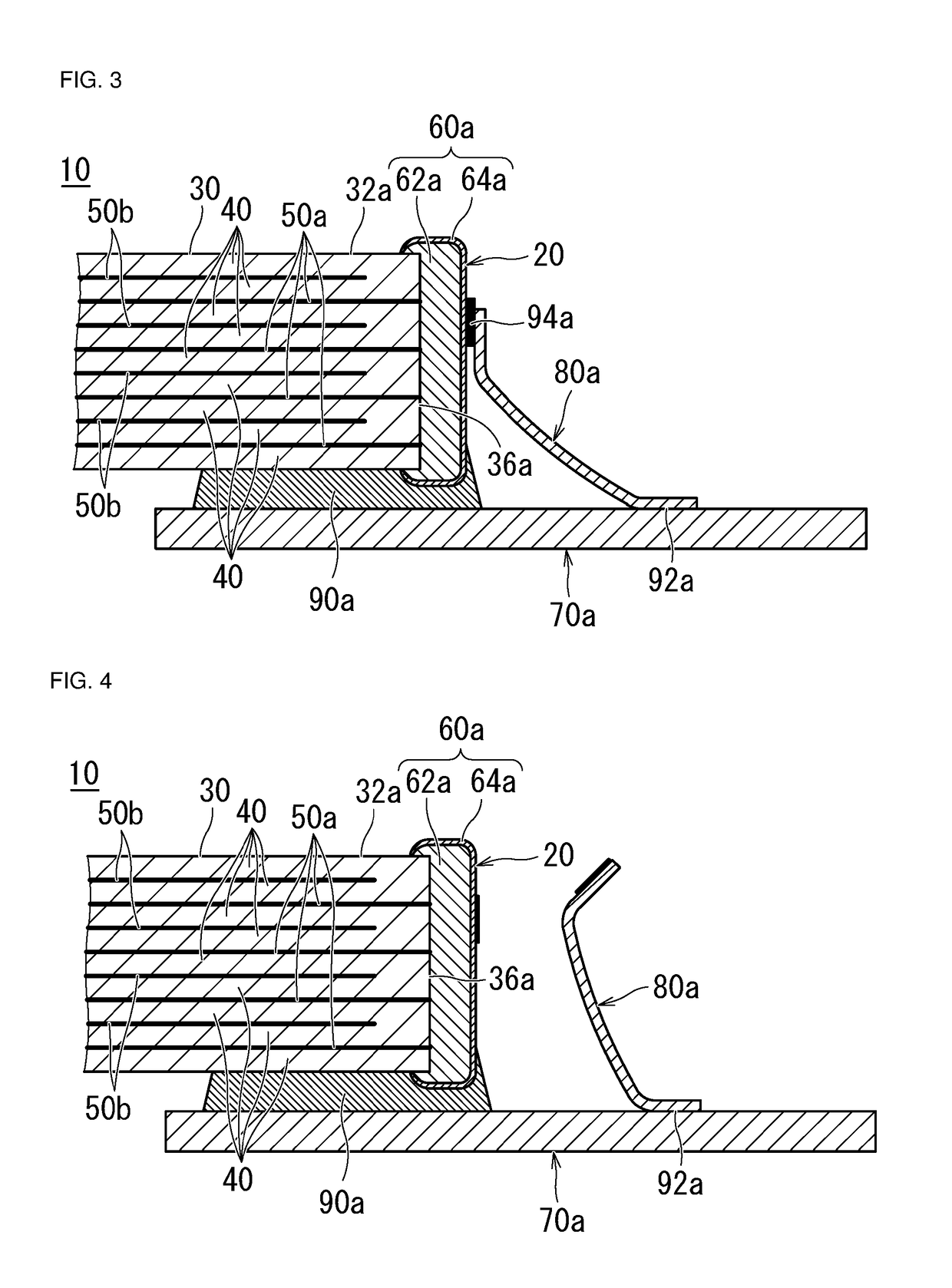Ceramic electronic component and mounting structure of the same
a technology of ceramic electronic components and mounting structures, which is applied in the direction of fixed capacitor details, sustainable manufacturing/processing, final product manufacturing, etc., can solve the problems of circuit failure, failure to function, and failure to meet the requirements of the current fuse,
- Summary
- Abstract
- Description
- Claims
- Application Information
AI Technical Summary
Benefits of technology
Problems solved by technology
Method used
Image
Examples
experimental example 1
[0101]In the experimental example 1, a circuit with multilayer ceramic capacitors as the ceramic electronic components according to the preferred embodiments of the present invention connected in series, as shown in FIG. 12, was manufactured, a fail-safe function of the multilayer ceramic capacitors were evaluated. One of the two multilayer ceramic capacitors connected in series was mounted on the substrate, after being subjected to dielectric breakdown by a dielectric breakdown voltage testing machine, in order to reproduce a failure state. Additionally, the capacitor connected on the right side in the circuit in FIG. 12 included a breakdown voltage of about 2 kV, and electrostatic capacitance of about 500 μF.
working example 1
[0102]In accordance with the manufacturing method described above, a sample (multilayer ceramic capacitor) for a working example 1 was manufactured. Specifications of the working example 1 and a fixing method between the substrate connection terminal and the mounting substrate were as follows.
[0103]Chip size (L×W×T): 16 mm×20 mm×3.7 mm (design value)
[0104]Ceramic layer: BaTiO3
[0105]Inner electrode layer: Ni
[0106]Structure of outer electrode[0107]Base electrode layer: Cu[0108]Plating layer: none
[0109]Structure of metal terminal[0110]C7035TM04 made by DOWA OLIN[0111]Quantity: 2 in total (only one pair)[0112]Shape of end portion on substrate connection terminal side (the second end portion): substantially Y shape[0113]Thickness: 0.1 mm
[0114]Bonding material bonding outer electrode and metal terminal: M705 made by Senju Metal Industry
[0115]Bonding material bonding outer electrode and substrate connection terminal: silicone based adhesive KE-1830 made by Shin-Etsu Silicone
[0116]Bonding ...
experimental example 2
[0143]In accordance with the manufacturing method described above with respect to the preferred embodiments of the present invention, a sample (multilayer ceramic capacitor) for a working example 2 was manufactured. The working example 2 included the same or a similar structure as that of the working example 1 excluding the substrate connection terminal being not included. Additionally, the second end portion of the metal terminal was directly connected to the land portion of the mounting substrate. Specifications of the working example 2 were as follows.
[0144]Chip size (L×W×T): 16 mm×20 mm×3.7 mm (design value)
[0145]Ceramic layer: BaTiO3
[0146]Inner electrode layer: Ni
[0147]Structure of outer electrode[0148]Base electrode layer: Cu[0149]Plating layer: none
[0150]Structure of metal terminal[0151]C7035TM04 made by DOWA OLIN[0152]Quantity: two in total (only one pair)[0153]Shape of end portion on mounting substrate side (the second end portion): substantially Y shape[0154]Thickness: 0....
PUM
| Property | Measurement | Unit |
|---|---|---|
| thickness | aaaaa | aaaaa |
| thickness | aaaaa | aaaaa |
| thickness | aaaaa | aaaaa |
Abstract
Description
Claims
Application Information
 Login to View More
Login to View More - R&D
- Intellectual Property
- Life Sciences
- Materials
- Tech Scout
- Unparalleled Data Quality
- Higher Quality Content
- 60% Fewer Hallucinations
Browse by: Latest US Patents, China's latest patents, Technical Efficacy Thesaurus, Application Domain, Technology Topic, Popular Technical Reports.
© 2025 PatSnap. All rights reserved.Legal|Privacy policy|Modern Slavery Act Transparency Statement|Sitemap|About US| Contact US: help@patsnap.com



